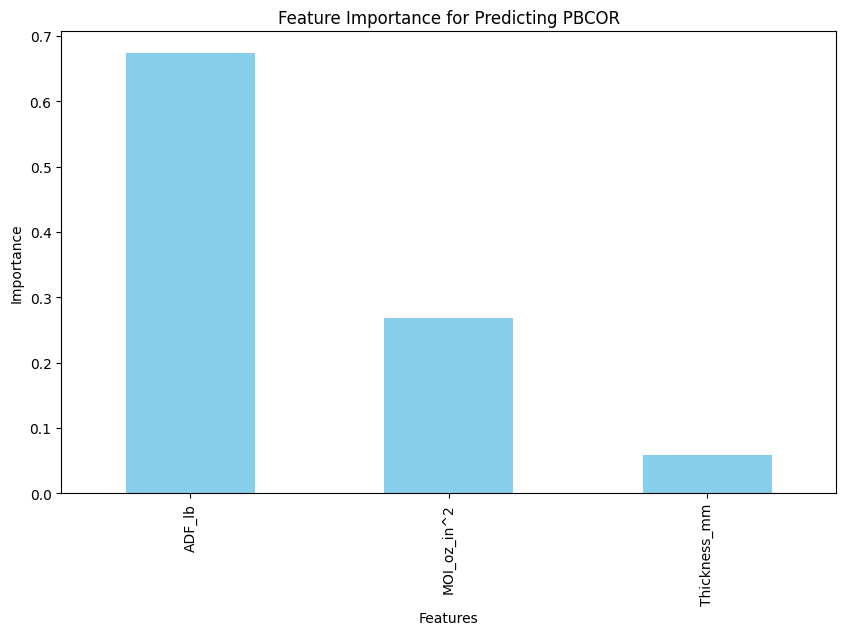
Proxy Feature Modeling PBCOR
|
|
|
Time to read 2 min
|
|
|
Time to read 2 min
Analysis and Predictive Modeling for Paddle Ball Coefficient of Restitution
This document summarizes the methodology and findings related to predicting the Pickleball Ball Coefficient of Restitution (PBCOR) for pickleball paddles. Leveraging established correlations between key paddle characteristics and their proxies, a linear regression model has been developed to provide a simplified and effective prediction tool for Coretek Pickleball LLC.
Based on previous experiments, strong correlations have been identified betwieen fundamental paddle properties and more commonly measurable proxies:
These high correlations enable the use of more accessible measurements to predict complex performance metrics.
A linear regression model has been established to predict PBCOR ($PBCOR_p$) using the identified proxies. The formula is as follows:
Where:
The specific constants derived from the linear regression analysis are:
| Constant | Value | Description |
|---|---|---|
| $C_1$ | -0.002152 | Proportionality constant for Absolute Deflection Force ($ADF_{lb}$) |
| $C_2$ | 0.000007351 | Proportionality constant for Moment of Inertia ($MOI_{oz\_in^2}$) |
| $C_0$ | 0.489256 | Intercept (bias) constant |
Based on the coefficients in the linear regression model, the USAP's approach to PBCOR can be interpreted as a balanced metric where both paddle flexibility and moment of inertia play a role:
Thus, the model suggests a nuanced interplay where both characteristics contribute to the overall PBCOR, with flexibility inversely related and MOI directly related to the final value.
Given the high correlation (over 90%) between COR and static deflection, the measurement of COR can be significantly simplified. Instead of direct, dynamic COR measurements (e.g., ball drop tests), the focus can shift to accurately measuring **Absolute Deflection Force (ADF_lb)**. A separate predictive relationship can then be established to estimate COR directly from ADF_lb, streamlining the testing process. This approach offers advantages in terms of reduced complexity, potential cost-effectiveness, increased measurement speed, and improved consistency compared to traditional COR testing methods.
An interactive web-based calculator has been developed to facilitate the prediction of PBCOR using the derived linear regression model. This tool allows users to input measured Deflection (ADF_lb proxy) and Swingweight (MOI_oz_in^2 proxy) values to instantly obtain the predicted PBCOR.